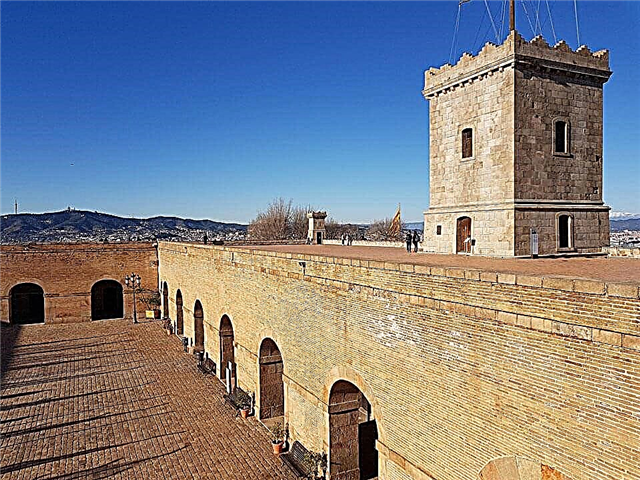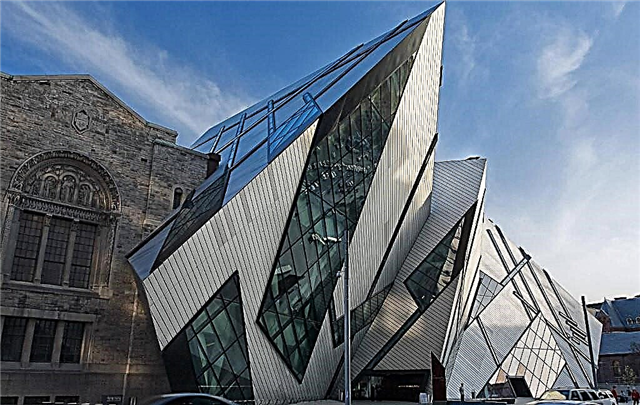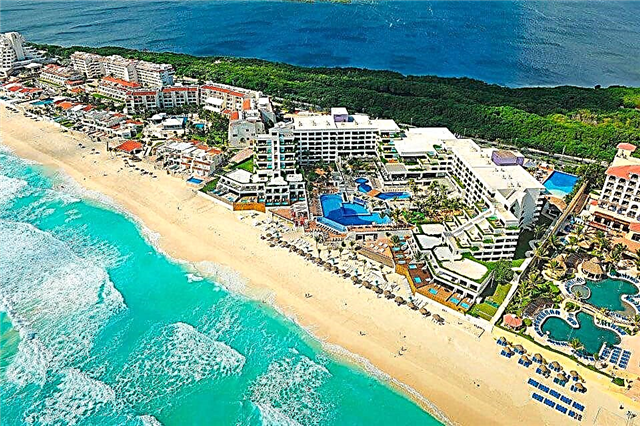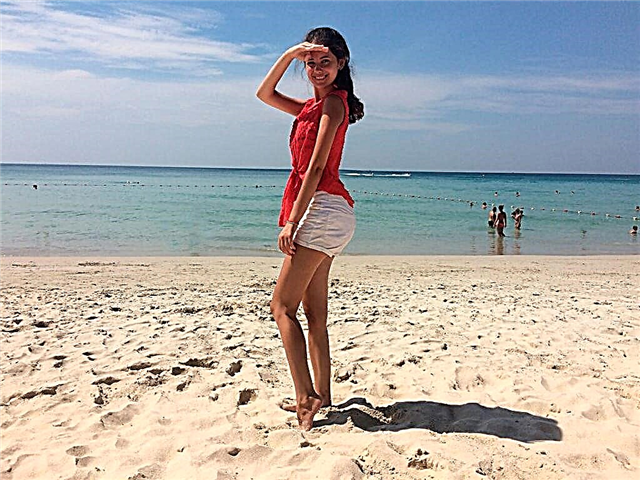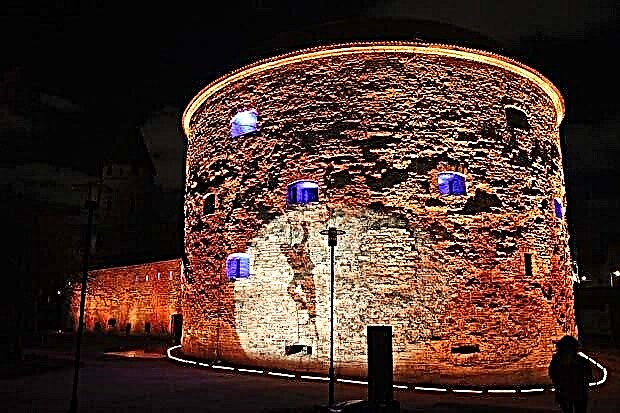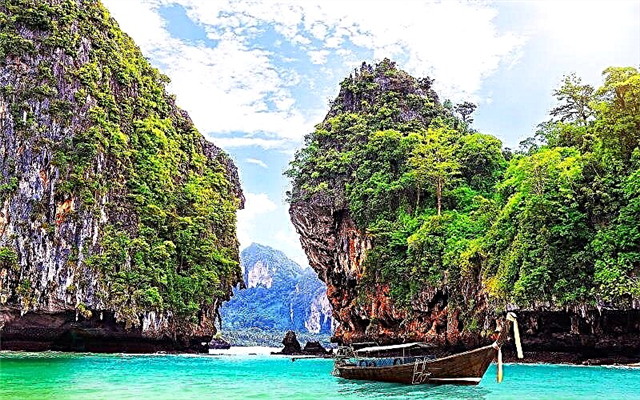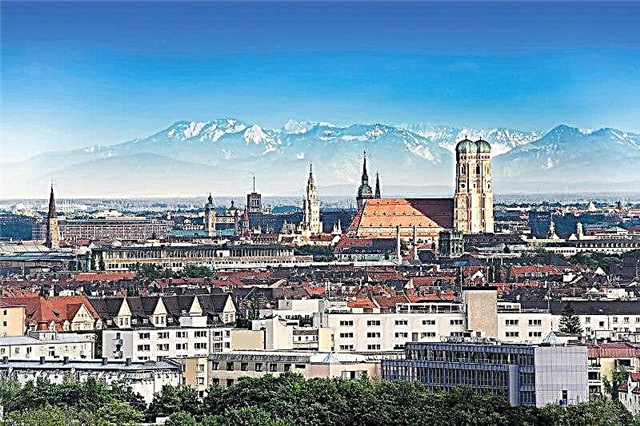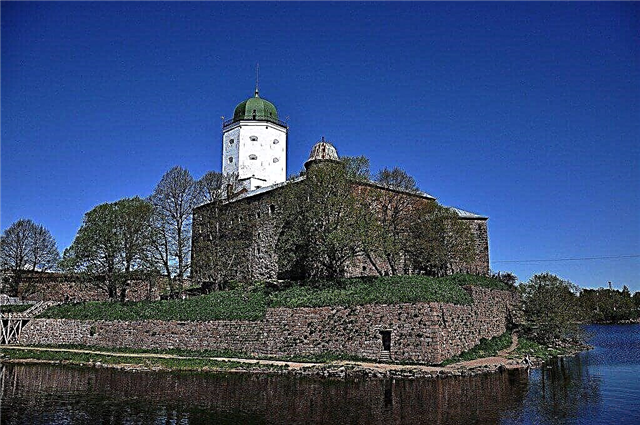Residents from different countries of our planet strive to see the unusually beautiful city of St. Petersburg at least once. Northern Palmyra, Northern Venice, the city of White Nights is filled with park ensembles, palaces, cathedrals.
Unusual monuments, museums, revealing all sides of the rich Russian culture, the historical past of the country. Every day you can wander along its large and small streets, listen to the splash of water in its many canals.
Or gaze fascinatedly at the Gulf of Finland and dream of traveling through the mysterious surroundings of the city. You can learn more about them by making one-day excursions from St. Petersburg. The main thing is to come here more than once and plan your trip in advance.
Peterhof and Kronstadt in one day

A trip to the outskirts of the Northern capital will reveal the secrets of the amazing fountain complex of Peterhof. Will tell about the birth of the city of Sea Glory on the island of Kotlin.
An individual car trip for a group of 1-7 people (possible with children) lasts about 8 hours. The journey begins from a specific hotel chosen for accommodation. The end of the trip provides for delivery to it or any other place in accordance with the wishes of the passengers.
Program:
A fascinating journey is born while driving along the Peterhof road, known since 1710. According to the idea of Peter I, it was supposed to conquer the guests of the city with its originality and beauty. The merciless history has destroyed many homesteads and temples along the road.
The unique landscape composition began at the border of the city of Fontanka (18th century), passed next to Narva Zastava, and stretched 40 km along the Gulf of Finland to Krasnaya Gorka.
The trip is designed in such a way that guests will surely see the solemn switching on of the Peterhof fountains. The sparkling silver jets of the Grand Cascade amaze with their size and luxury. It is one of the largest fountain devices in the world.
Kronstadt is considered one of the most beautiful cities in the vicinity of the Northern capital. The port city has a rich history of emergence, has preserved many attractions. The first icebreaker of Russia of the modern type "Pilot" was born here, divers appeared (from the school in 1882).
The second largest temple in the country was erected - the Naval Nikolsky Cathedral (after the Cathedral of Christ the Savior).
Unknown Tsarskoe Selo

A trip to one of the most beautiful suburbs of the capital includes a tour of several main historical sights of the city of Pushkin. Tsarskoe Selo became the official residence of the monarchs of Russia in 1741. Since that time, colorful palaces have been erected here, parks have been formed, amazing complexes of fountains have been created.
The beginning of the trip as part of a group of 1 to 10 people begins in the city. Arrival to it is made independently. Duration is about 2 hours.
The walk takes place along a special route that reveals the most interesting corners of Tsarskoye Selo:
- A Chinese village, a corner of Ancient Rus, the estate of Prince Boris Vladimirovich.
- Mysterious pavilions, romantic and forgotten paths of Alexander Park, Paley Palace. Here you are invited to hear the love story of Prince Dmitry Pavlovich and Coco Chanel.
- The symbolic grave of Rasputin, the Sofia district or the city-utopia.
- Places associated with the years of the war, the history of the famous Amber Room.
To visit the palaces (Alexandrovsky, Ekaterininsky), you need to pay an entrance ticket.
Tsarskoe Selo and Pavlovsk in one day

During the trip, you are invited to listen to a fascinating story, to see the solemn beauty of the two summer residences of the emperors. To touch the luxury, the splendor of their life, to learn the historical troubles of the times of the German occupation.
The 7-hour journey takes place by minibus and is designed for the number of passengers from 1 to 7. A car leaves from the hotel's location and returns here or to any other place along the route. Transport services, tickets to palaces, and other attractions are paid separately.
Program:
Tsarskoe Selo or a settlement, which first came down to us from 1502, like Saritsa according to the Novgorod census book. Here is one of the most beautiful palaces in Europe - the Catherine Palace.
Alexander Palace. Mysterious park pavilions, over 1000 attractions still keep the secrets of royal life. The snow-white marble staircase, the gilded lattice of the front gate, the blue color of the elements of the palace buildings (in the Baroque style) amaze with their beauty and are considered the hallmark of the city.

Pavlovsk, near the majestic Tsarskoye Selo, is an unusually cozy, homely town, surrounded by one of the most beautiful landscape parks in the world. Empress Maria Feodorovna played the leading role in its creation.
The town became the summer residence of Paul I in 1796. Guests begin their acquaintance with Pavlovsk during a walk through the palace, park, inspection of the toy fortress Bit, which stands on the site of the medieval city of the Slavs. Monument to Johann Strauss, Temple of Nicholas the Wonderworker, architectural masterpieces of houses, estates of famous people.
Travel to the world of abandoned estates

Looking at the old house, where no human dialect is heard, children's voices do not sound, there is no joyful barking of dogs, pictures from the imaginary life of the owners involuntarily arise. There are many abandoned estates in the vast expanses of Russia.
The life of their owners, the spirit of different eras comes to life within the abandoned walls and complements the rich history of the country, created by the famous families, family dynasties. More and more often there is a desire to visit such places. In the Leningrad region, this is easy to do during an individual trip with an experienced guide.
During the trip, there is a stop for tea with your sandwiches in the building of the church in Gubanitsy. The beginning of the movement is organized from the metro station Moskovskaya. The exact parking lot of the bus is specified before the trip.
Program:
The fifth hill is the oldest ruins of a manor structure dating back to 1828 (only the foundation has survived). There was a small wooden house on a beautiful hill. Three alleys of lindens, elms, and larches led to it. Terraces were laid out on the slope.
They are still attracting attention now. The first owners of the estate were the sisters Renkevichi and Fok. Senator Brieskorn became the owner in 1804. After his death, the widow (one of the most cruel landowners in Russia) in the middle of the 19th century built here the Trinity Church in the form of an oval-shaped building, surrounded by columns and an antique portico. Its ruins tell about the former greatness of the estate.
House of Barons Wrangel in Torosovo. The two-storey building of the Gothic style of red brick was erected in the form of a typical "noble nest". It was owned by representatives of one of the noblest families in Russia.
The stone manor looked like a beautiful knight's castle. Unfortunately, now the remaining buildings do not have the same beauty. Only the Wrangel Park (although not so well-groomed) and the memoirs of Nikolai Nikolaevich Wrangel tell about the life of the landowners.
Gostilitsy. The favorite of Elizaveta Petrovna lived here, her stormy life passed with merry entertainments, hunting, revelry. The large and beautiful manor made it possible to arrange lavish festivities here. It originally belonged to Field Marshal Munnich.

Most of the buildings were built according to the designs of the famous Rastrelli. The main landscape elements are the Gostilka river with dams, branches, channels. The last owners of the estate were F, E. Wrangel, K.F. Siemens and his daughter M.K.Grivenets. The buildings of the palace, a mill, a church, greenhouses, a tea house, and a park have been preserved.
Church of John the Baptist in Gubanitsy.The village of a large Lutheran parish is located on the territory of the ancient Izhora land, where Russians and Finns lived nearby. Services are still taking place in one of the three churches, consecrated in 1860.
The service schedule contains information in Russian and Finnish. The beautiful building was built of large boulders in the Gothic style according to the traditions of Estonian craftsmen. A hospitable priest tells a detailed history of the church. Rest and a snack are provided here.
Belogorka. The trip ends with a visit to the abandoned house of the Eliseevs. It is often called the most beautiful estate in the Leningrad Region. It was bought back in 1897 by the great-grandson of the famous Eliseev, who opened a famous store. The building was built in the Art Nouveau style.
The estate was surrounded by a park. Linden trees were planted in it in a special way: roots up. With this planting, a tree grew with numerous thin trunks. You can see them walking along the old alleys of the empty manor.
Imperial residences - Gatchina: palace and park ensemble

Palaces and parks in the outskirts of St. Petersburg, created during the times of different monarchs, are world famous. They surround the northern capital like an exquisite necklace from the imperial residences. There are five of them: in Peterhof, Tsarskoe Selo, Pavlovsk, Lomonosov, Gatchina. Legends, myths, interesting historical events live next to them. A trip to Gatchina reveals many of them.
Individual acquaintance with the palace and park complex in Gatchina takes place in the composition of 1-2 people by car, without children, for 5 hours.
The journey begins at the Mayakovskaya metro station. For an additional fee, it is proposed to pick up guests from the hotel, to increase the number of passengers. The road to the place takes about 1 hour.
During the walk, information is provided on the basics of arranging parks in Russia since the 18th century.
It tells in detail about the parks of Gatchina.

The private garden is a small green space with a regular layout, located at the walls of the palace. The garden is distinguished by a large number of sculptural elements and has covered alleys (bersot).
All 10 alleys of the garden meet in its center and resemble a star. In the central square there is a marble statue of the goddess Flora (spring). Only those close to Pavel and Maria Feodorovna could walk behind the fence of the cozy little garden.
Palace garden. The park arose in the second half of the 18th century, when English landscape parks came into fashion (after the "French" style). Water bodies with two lakes, ponds, rivers occupy the fourth part of the Palace Garden.
White and Silver Lakes are located in the largest part, called the English Garden. There are two periods in the formation of the park: Orlovsky and Pavlovsky. First, interesting structures such as the Echo grotto, the Octagonal well, and the Chesme obelisk appeared. After the death of Count Orlov, Pavel began to own Gatchina. The pavilions of Venus, Eagle, Karpin bridge, Birch and Admiralty gates appeared.
Silvia. The park was planned by order of Paul. The French regular style was taken as a basis. Architect N. A. Lvov designed an amphitheater for theatrical tournaments, carousels of knights. Humpback, Brick Bridge, Cold Bath, Farm, Poultry House were built according to the designs of A.D. Zakharova.
During a walk through the palace and park ensemble, there is an opportunity to visit the best vantage points, see the unique water and forest labyrinths, several pavilions located on secluded islands.
Imperial residences. The city of Oranienbaum (Lomonosov)

The birth of Oranienbaum is associated with the name of the Grand Duke Menshikov. The land plot, located 40 km from the capital along the coast of the Gulf of Finland, was received by the Tsar's favorite in 1710. During the first 15 years, the Menshikov Palace, other buildings, wonderful park areas, which became the architectural heritage of the city, appeared here.
An individual trip to the city of "orange trees" or Oranienbaum is organized for 1-2 people. The trip takes place by car and lasts 5 hours. Entrance fees for sightseeing are self-paid.
Program:
The picturesque area, beautiful water areas turned (in the second half of the 18th century) the city into the residence of Emperor Peter III, and later into a favorite resting place for the rich people of the capital. During the trip, it is proposed to get acquainted with some of the sights of Lomonosov.
- The Grand Palace (Menshikovsky) is considered the oldest building in the city. It is believed that the palace is superior in luxury to the famous residence of Peterhof. The architectural masterpiece has been preserved in its original form without restorations.
- A roller coaster or pavilion designed for entertainment. It is equipped with wooden slopes. Guests in special carriages descended with joy. Climbing the slopes took place along the ropes. In those days, it was a rare building.
- The Chinese Palace is considered a masterpiece of the Rococo style. After the restoration in 20111, the Hall of the Muses, the Great Hall, the Blue Living Room and the Glass Bead Study of Catherine II were opened for guests. The interior decoration consists of picturesque panels, paintings, embroidery, drawings.
- Palace of Peter III. The architect of the building was Rinaldi. The palace immediately became the center of the famous amusing fortress Petershtadt.
A trip to the Ruskeala mountain park

The number of tourists who dream of seeing the pristine beauty of Karelia is increasing every year. You can come to the land of forests, blue lakes, turbulent rivers on your own or together with an organized excursion, for example, from St. Petersburg. Cities, the history of the construction of architectural masterpieces, which is closely related to the natural heritage of Karelia (marble, wood).
It is proposed to start the trip by bus as a group of up to 50 people. Departure of the bus is planned from the metro stations Gostiny Dvor or Nevsky Prospekt (to be confirmed before the trip) at 6.45 or from the station Prospekt education at 7.15 in the morning. The duration is at least 12 hours. The final destination of the trip is the Ruskeala Mountain Park.
Program:
An interesting acquaintance with the history, culture, organization of the life of the inhabitants of Karelia with stops at the following places will pass along the entire road.
The medieval fortress Korela.
The sight of Karelia was built at the beginning of the XIV century and has a difficult history. Kyakisalmi, the "cuckoo strait" keeps many interesting facts related to pagan legends, real life in the form of a defensive structure in the north-western borders of Russia.

At a certain time, there was a prison in it, where many political prisoners were kept, overthrown by John VI. Unsolved prisoner "Nameless" or "Iron Mask" who served 30 years in a serf prison. Now on the squares of the New Fortress there is a sanatorium "Zapadny".
The city of Sortavala.
Lunch will be held here and only 45 minutes are given to get to know one of the oldest cities in Karelia. It is located along the shores of Vakkolahti Bay. Its history reflects the pages of the life of Finland, Sweden, Russia.
Akhvenkoski waterfalls or "Perch threshold", "Water rapids" is considered a flat waterfall on the amazing Tohmajoki river. It does not sparkle with silver splashes, and the water streams have a reddish tint due to the high content of iron and peat elements.
For convenience, it is proposed to walk along the tourist paths to the equipped observation decks. Even in winter, the waterfall does not always freeze.

Ruskeala Mountain Park (3 hours).
It was created on the site of the former quarries for the extraction of marble and since 2005 has become a popular tourist destination in Karelia. Deep canals, a lake that can be navigated by boat, were created in place of canyons filled with groundwater. A rope is stretched over the Marble Canyon for the most daring travelers.
Often, guests visit the Russkealsky failure, the Italian quarry, adits, the cliffs of Ivan da Marya, Catherine II. While visiting the park, there is an opportunity to go diving, bungee jumping, go down on trolls, ride a snowmobile, sleigh.

The abandoned Lutheran church in the village of Lumivaara ("Snow Mountain") is hidden by forest thickets. This is a legacy from the times when it belonged to Finland. The beautiful interior decoration of the church (paintings and inscriptions in Finnish) and an old bell that adorns the not quite well-groomed bell tower have been amazingly preserved.
Understand the greatness of Kronstadt

The cradle of the Russian fleet, the port city of seafarers, appeared almost together with the capital on the island of Kotlin and other small islands. The first fort was built on an embankment, and then the famous fortress of Kronstadt was gradually formed. The consecration of the fortress took place in May 1704.
This day is considered the birth of the city, where the Citadel of the Baltic Fleet naval base was later formed. The history of the city has many pages related to ships, travelers, inventors, which left their mark on the history of Russia. Listen to the story of the guide, see the sights of Kronstadt during a walk.
The group consists of 1-10 people who independently reached the desired place.
Program:
- Acquaintance with the history of the birth of the city. A story about the monuments to Ushakov, Makarov, Belinzhausen, others and their role in the history of Kronstadt. About 300 architectural monuments of the 18th - early 20th centuries have been preserved here.
- Interesting facts about the creation of the Baltic fleet of the Petrovsky dry dock, forts will sound at the monument to Peter I. The famous round-the-world expedition was sent from this city, 56 geographical discoveries were made.
- Near the monuments of the 20th century, it will be pleasant to hear that there is a measuring station in the city, taken as a sea level zero. Here Yuri Gagarin exclaimed "Now I know where the Navel of the Earth is!"
- Naval Nikolsky Cathedral. The temple was erected in such a way that the dome and the cross were visible to sailors when approaching the island, acting as a lighthouse. Until the last 10 years of the 20th century, people could only get to the island by water. Now a road leads to it through a dam and a tunnel has been laid at the bottom of the bay.
Excursion-quest in Tsarskoe Selo

The innovative principle of sightseeing travel appeared in 2006 in the US Silicon Valley. In real life, experts have implemented a puzzle based on the works of Agatha Christie. Since 2013, this approach has become popular in Russia.
For this, various tourist sites are used: museums, parks, greenhouses, and individual attractions. Their features are easy to remember while observing and solving logic problems, riddles, puzzles, interesting tests. The ultimate goal of any quest is considered to be the ability to reliably remember the information offered, to get special positive emotions.
Individual walking tours are organized for groups of 1 to 5 people. Over the course of 2.5 hours, the participants will learn many important facts from the history of Tsarskoye Selo.
They go to the city of Pushkin on their own to the specified meeting point. Additionally, it is proposed to visit the Catherine Palace, Tsarskoye Selo Lyceum.
In a game format, by collecting hints and keys, participants will see the main attractions, guess the empress's riddles, solve the problems of the Tsarskoye Selo Lyceum, fill in a magic map and find treasures.

The main points of the walk are as follows:
By the paths of Pushkin at the Tsarskoye Selo Lyceum. Here passed the years of Pushkin's study, the formation of views, the birth of the poet's talent. In these places he wrote the last lines of the poem "Eugene Onegin", and in his poems he mentioned the Kagul obelisk, the Morey column, statues of the era of Peter.
Children must complete creative tasks: find the windows of the poet's room, photograph the coat of arms of the lyceum. At the monument to the poet, they will certainly recite Pushkin's favorite poems.
Unravel the secrets of the Catherine Park. It reflected the brilliance, luxury, power of the monarchs of Russia. This is a unique example of landscape gardening, skill of sculptors, architects, architects. During the walk, you need to answer the questions of the main mistress of the park, Catherine I.
They concern the favorite places of lyceum students, “the eighth wonder of the world in the Catherine Palace. After compiling all the fragments of the park into one whole, it will be possible to see the place of the treasure of Catherine I and hear the obligatory festive fireworks.
In the footsteps of the emperors: Tsarskoe Selo, Pavlovsk and Gatchina

The life of the emperors passed in luxurious palaces, among beautiful gardens and parks. There are five of them in the vicinity of the city. Among them there are three with especially beautiful palace and park complexes. This is a colorful Tsarskoe Selo, a unique park in Pavlovsk, romantic Gatchina. Among the special interiors of the chambers of the monarchs of Russia, mysterious pavilions, alleys are hidden secrets of the imperial families.
To see the luxury of the palace, to touch the secrets of the life of their owners is offered in a group trip (up to 40 people) to three wonderful suburbs of the capital. The trip cost 1890 rubles. per person, lasting 10 hours by bus.
Departure at 10 o'clock in the morning from the station "Nevsky Prospect". Return at 19:00. The payment includes transfer by bus, entrance tickets in all places according to the program. Visiting palaces, residences requires an entrance fee. The order of visiting the displayed objects may vary.
Program:
The city of Pushkin. It became the residence of the tsars in 1740-1750 during the reign of Elizabeth Petrovna. A luxurious palace appeared instead of the modest building of Catherine I. Walking along the alleys of Catherine Park, it is pleasant to listen to the story of the three great owners of the residence, the history of the construction of majestic chambers, park pavilions. Learn interesting facts about the Amber Room.
See the Agate Rooms, the Turkish Bath, the Grotto, the Hermitage. Walk along the alleys next to the statues acquired during the time of Peter I. To reveal the peculiarities of Pushkin's life while studying at the Tsarskoye Selo Lyceum.

Life of the royal family in the Pavlovsk Palace. A tour of Pavlovsky Park starts at about 12 hours. During the walk, information is given about the history of the creation of a unique park ensemble. Its center is the Grand Palace of Paul I and his family. In the chambers with luxurious decoration, the daily life of the family of monarchs of the 18th century took place.
The romantic landscapes of Gatchina begin to be viewed at 4 pm. This is a special world, the favorite residence of Paul I. During the walk, you are invited to hear about the emperor's walks to the Silver and White lakes, water labyrinths, mysterious dungeons.
You can look at the amazing flower slide created by the gardeners of Gatchina, the restored Birch House. Now in the park of Gatchina there are mass festivities, holidays of local residents and guests of the city.
Forts of Kronstadt

There are over 300 attractions in the city. Among them are the famous forts of the fortress, erected to protect St. Petersburg. Unique hydraulic engineering, defensive structures were an example of a military city of the 18th century, a powerful defense complex of the Baltic. They played an important role in the fate of Russia.
An individual program for a group of 1-12 people takes 1.5 hours by car.
The main walk will take place at Fort Constantine. It is one of the 9 southern forts. Conditionally, defensive structures are divided into northern and southern ones. Among the southern ones of interest are the forts "Kronstadt", "Citadel", "Plague".
Other objects can be seen from the territory of Fort Constantine. It is easily accessible by car through the dam. When visiting the Museum of the Lighthouse Service, you must pay an entrance ticket.
The information is presented on the following interesting facts:
- features of construction on water
- the most famous and beautiful forts of the fortress
- the role of forts during the war period
- the use of military fortifications now after the loss of protective functions
To medieval Vyborg

The only medieval city in the west of Russia is located 120 km from the Northern capital. It is often called the gateway of Russia to Finland. Another country begins very close. Built in the 13th century by the Swedes, the city has formed an original look.
It has preserved buildings of non-standard architecture, castles, fortress, estates, old parks. The city has its own Red Square, the historical name of which was Red Well Square. Near the source, supporters of King Sigismund were executed in 1559. According to legend, the water in the well turned red.
The trip (lasting 10 hours) to the ancient city is proposed to be made in a group of up to 30 people.
Climbing the tower, sightseeing not included in the list of the program, the purchase of the famous pretzel is not included in the payment.
Inspection of the city is built on a walk in accordance with the thematic directions:
Architectural heritage. Acquaintance with him takes place during the inspection of individual attractions:
- Vyborg castle
- Olaf's tower
- Town Hall Square
- Church of Saints Peter and Paul
- Round Tower
Old houses, "delicacies of emperors":
- merchant guild house
- Burger's estate
There is a large exhibition of local crafts and the famous Vyborg pretzel brought by the Franciscans.
"My rest", "my peace". This is the translation from French of the name of the landscape park on the coast of the Gulf of Finland. It was created by human hands and naturally blended into the surrounding world with original grottoes, bays, shady alleys, decorative elements, and old estates.
Cultures of different eras (from ancient times to the myths of the Kalevala epic) are harmoniously combined with each other. During the walk, age-old pines, sculptures of ancient heroes, mysterious pavilions look equally mysterious.
Oreshek fortress: secrets of the impregnable citadel

Until the 14th century, little attention was paid to a small island at the sources of the Neva (in front of the Neva Bay) for the construction of a defensive fortress. Basically, they were erected on the way of water trade routes. The small island was called Orekhovets (its shape resembled a nut).
Novgorodians erected a new fortress on it in 1323. The first peace treaty between Russia and Sweden was signed within its walls. It did not exist for long and in 1348 the Swedes attacked the fortress. The walls of the fortress have seen many battles.
An important page in her life began during the time of Ivan III, when all the northwestern borders of Russia were strengthened by the construction of new defensive complexes: Kopor'ya, Ladoga, Yama, Oreshka. The old fortress, built by the Novgorodians, was dismantled and a new one was erected. She occupied almost the entire island. Now, out of 10 towers erected along the perimeter of the fortress, 6 have survived.
It is proposed to take a walk around the fortress as part of a group of 25 people. The duration is 10 hours. Travel to the island is carried out by bus to the boat parking lot. The price of the entrance ticket to the fortress is included in the total cost of the walk.
During the trip, it is proposed to go through the main buildings of the citadel, climb the Naugolnaya (Golovin) tower, see the surroundings of the island.
- Chronicle of the impregnable Nut. The history of the fortress is connected not only with great battles, but also with the times when it served as a prison for political prisoners. Her prisoners were the Decembrists, disgraced members of the royal family and her favorites, the first wife of Peter I.
Emperor John VI, participants in the uprisings. A separate part of the fortress's fate is represented by the years of the Great Patriotic War, when the defenders of Oreshk did not allow the ring around Leningrad to be closed, and provided the “Road of Life”. - Secrets of serf architecture. They are associated with engineering tricks used in the construction of the fortress.
Strelna, Alexandria and Oranienbaum: on a visit to the imperial family

The oldest suburb of the capital is located on the banks of the Strelna and Kikenka rivers. Its first owner was the governor Johann Schütte. During his lifetime, a manor was built, a park was laid out, a pond was dug. The main page of Strelna's life is associated with the decree of Peter I and the construction of the palace, which later became known as Konstantinovsky.
The Travel Palace (now it houses the Museum of Peter I). Strelna's gardens keep the story of how Peter I brought potatoes from Holland and grew the first two sacks here in the sovereign's gardens. How he loved gardening.
A group trip of up to 50 people is made by a bus departing from the Nevsky Prospekt metro station. The bus will come back at 19 pm.
Program:
- Royal gardens in Strelna. The approximate time period is from 10 to 12 hours.
- Alexandria Park: in the footsteps of the Romanovs. A walk in Alexandria is planned from 12 noon to 14.30.
- Oranienbaum frozen in time. This city was not captured during the war years and sights have been preserved in it in the form in which they existed two centuries ago.
During the walk you can see palaces and museums. Elegant pavilions, luxurious buildings of the 18th century. Departure is planned at 18 o'clock.
Trip to Veliky Novgorod

The history of Russia as a state is connected with Veliky Novgorod. The oldest city, known as a medieval center of trade, crafts, an important link between Russia and medieval Europe. And now its streets with monuments of wooden architecture are shrouded in the atmosphere of antiquity.
Feel the centuries-old history of the city during a group trip of up to 50 people, lasting over 12 hours. The trip takes place by bus. Departure at 8 o'clock in the morning from the metro station "Moskovskaya".
The program includes acquaintance with the following sights of Novgorod:
Novgorod Detinets is the heart of the city. While visiting the legendary Kremlin, you are invited to hear many interesting facts about the life of Novgorodians, learn the secrets of the Faceted Chamber, admire the decoration of the oldest church in Russia, St. Sophia Cathedral.
Hear the legend about the monument to the dove sitting on the cross of the cathedral. Open-air museum. The tour of the Kremlin takes place at 16.30.
Coloring of Yaroslav dvorishch. Until now, archaeologists have not found traces of the amazing palaces of Yaroslav the Wise. According to the chronicle, they were the most beautiful in Europe.

The intertwining of cultures in the Yuryev Monastery. It was built on the site of a pagan temple where rituals were performed in the name of Perun. During the walk, information about the history of the temple is offered, a visit to the ancient church of the Nativity of the Blessed Virgin Mary.
Vitoslavlitsy: the world of wooden architecture. The open-air museum consists of wooden buildings from the 12th and 13th centuries. In small peasant dwellings, the atmosphere, the way of the past, has been preserved. When the Novgorodians huddled in small rooms, the stove was heated in black.
During a walk from 13 to 14 hours, you can take part in interactive games, get acquainted with the work of folk craftsmen.
In your free time (19 hours), you can independently visit the Museum of the Iron, the Battle Pass in the Kremlin, the Museum of Artistic Culture of the Novgorod Land, the Trinity Archaeological Excavation. The return is scheduled at 22:00.

